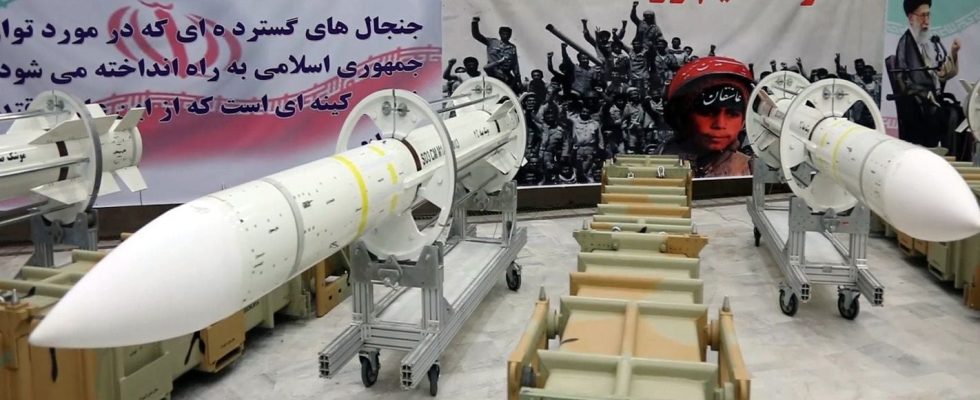Unprecedented, the salvo of missiles and drones fired by Iran at Israel opens the possibility of a more massive confrontation between these two powers. In their abilities as in their ways of acting, many things oppose them. Overview.
An Iranian army from another age
In terms of numbers, the Israeli forces are more of a David than a Goliath against Iran, with around 170,000 active soldiers compared to nearly 600,000, including a third of the Revolutionary Guard Corps, a state in the state. Tehran also has more equipment, but it is old and not very modernized: its 1,500 tanks, most of them Soviet, would undoubtedly be no match for the 400 Israeli Merkava tanks. In any case, there is no question of direct land combat between the two countries, a thousand kilometers apart and separated by Jordan and Iraq, except via the allied militias of Lebanon (Hezbollah) and Syria. .
Iranian air force upgraded
In the air combat too, the match is up: the Iranian fleet dates from before the Islamic revolution of 1979. For its part, Israel has more than 300 sophisticated aircraft, all American, including around forty F-35, fighter-bombers. latest generation stealth. The Israeli air force also has tankers. The Jewish state also has the capacity to carry out air raids, which the Islamic Republic does not have.
“Israel can also count on allies on the ground, in particular minorities hostile to the regime; on advanced intelligence bases in Iraqi Kurdistan and in Central Asia; and on capabilities to jam Iranian defenses,” lists David Khalfa, co-director of the North Africa and Middle East Observatory of the JeanJaurès Foundation.
Iran, aeroballistic power
To compensate for the weakness of their aviation, the Iranians have invested in off-board technologies and designed dozens of types of cruise and ballistic missiles, as well as drones, some capable of reaching Israel. On April 13, it demonstrated for the first time its capabilities to carry out an attack combining these different weapons. Downside: only half of the hundred ballistic missiles launched worked correctly, and barely ten managed to hit Israeli territory.
Israel relies on its shield from heaven
To destroy the drones and missiles coming from Iran, Israel has its planes – even those of its allies, as was the case on April 13 – and several layers of ground-air defense: the “Iron Dome” to drones and rockets, the “David’s Sling” for medium and long range missiles and finally the Arrow 2 and Arrow 3 systems for ballistic missiles.
Israel, however, fears two things, in the event of coordinated attacks by Iran and its allies (Hezbollah, Houthis, militias in Syria and Iraq), who together have hundreds of thousands of rockets: first, that it there are too many vectors to counter at the same time; then to find ourselves, over time, short of anti-missile missiles. To do this, it is developing a complementary laser system, the “Iron Beam”.
The nuclear shadow
Thanks to the help of the French authorities, in the 1950s, Israel possessed atomic charges, even if the authorities always denied it. Its Jericho III ballistic missile is capable of hitting Iran if its vital interests are targeted. For its part, the mullahs’ regime has enough material to make several nuclear bombs. But it is careful not to cross a certain threshold of uranium enrichment, synonymous with an official renunciation of a peaceful program in favor of military use. “It is not certain that Tehran will take the step now,” explains David Khalfa, “because that would lead to a return of UN sanctions.”
